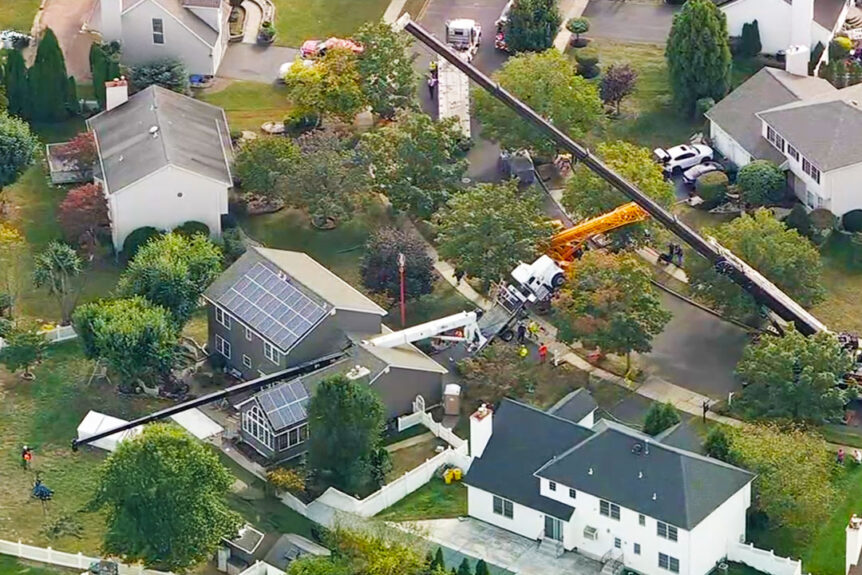The recent crane collapse New Jersey residents saw in Hamilton Township has renewed discussion about ground based lifting safety versus helicopter assisted operations. A crane on Lea Drive fell over while placing a hot tub into a backyard, its boom breaking through a home’s roof and causing major property damage. No injuries were confirmed, yet the dramatic event showed how even small residential jobs can become dangerous when heavy equipment operates in tight spaces.
The Hamilton Township Event
Witnesses said the collapse sounded sudden and violent. The crane’s front wheels rose off the pavement just before the boom failed. In seconds, steel and cable ripped through the roof. Emergency teams arrived fast, securing the scene and later using more cranes to stabilize the wreckage. Crews worked to prevent fuel spills and further structural failure. Protective tarps were set up to guard the home from coming rain while engineers checked the damage.
The incident has since sparked fresh scrutiny of small scale crane jobs and whether aerial options might lower risk.
Ground Crane Vulnerabilities
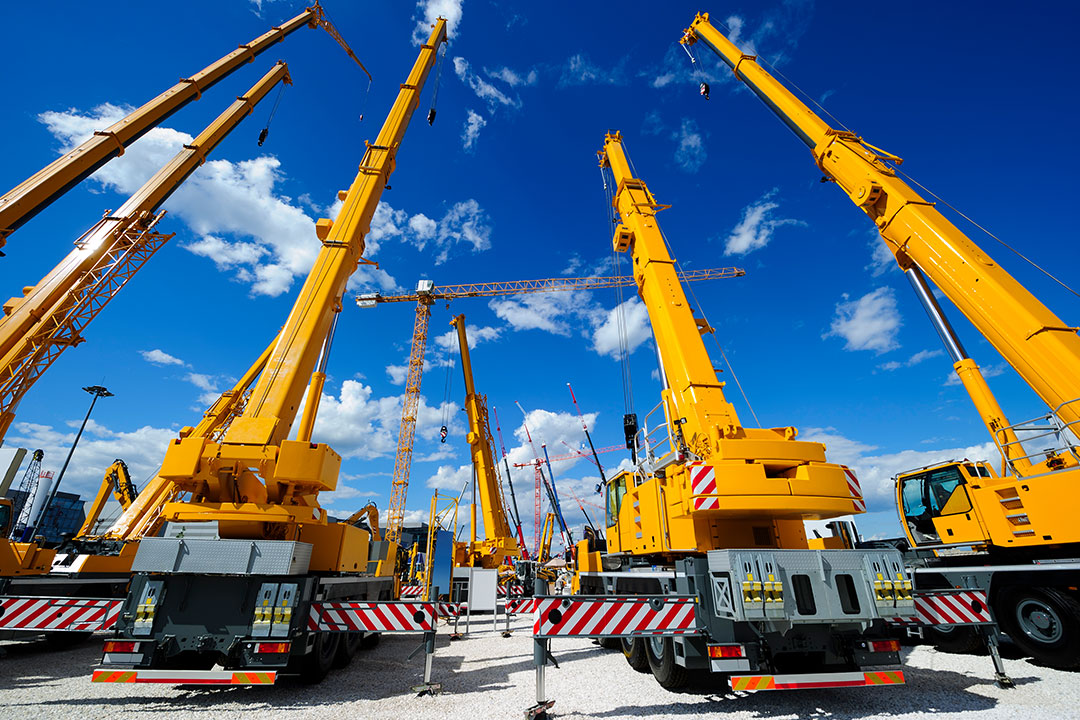
Several ground cranes awaiting deployment.
Ground cranes are vital across construction, yet their success relies on perfect balance among load, geometry, and terrain. When these elements change, accidents can happen instantly. Residential lifts heighten these risks since operators often have little space, changing soil conditions, and obstacles like trees, fences, and power lines. These factors often lead to failure:
- Unstable ground support: Outriggers need solid footing. Uneven or soft ground can make the crane sink or tilt during operation.
- Overextension of the boom: Reaching over roofs or long distances raises leverage forces, swiftly passing the machine’s safe capacity.
- Restricted working area: Suburban lots offer minimal space for safe positioning, setup, and rotation.
- Complex permitting and setup: Residential areas often need road closures, traffic control, and extra safety watches, lengthening exposure time.
In the crane collapse New Jersey residents saw, the equipment had to reach over a house to access the drop area. This geometry put too much stress on the boom and upset the crane’s balance. The outcome was catastrophic, even with skilled operators and apparently normal circumstances.
Why Helicopter Lifts Reduce Risk
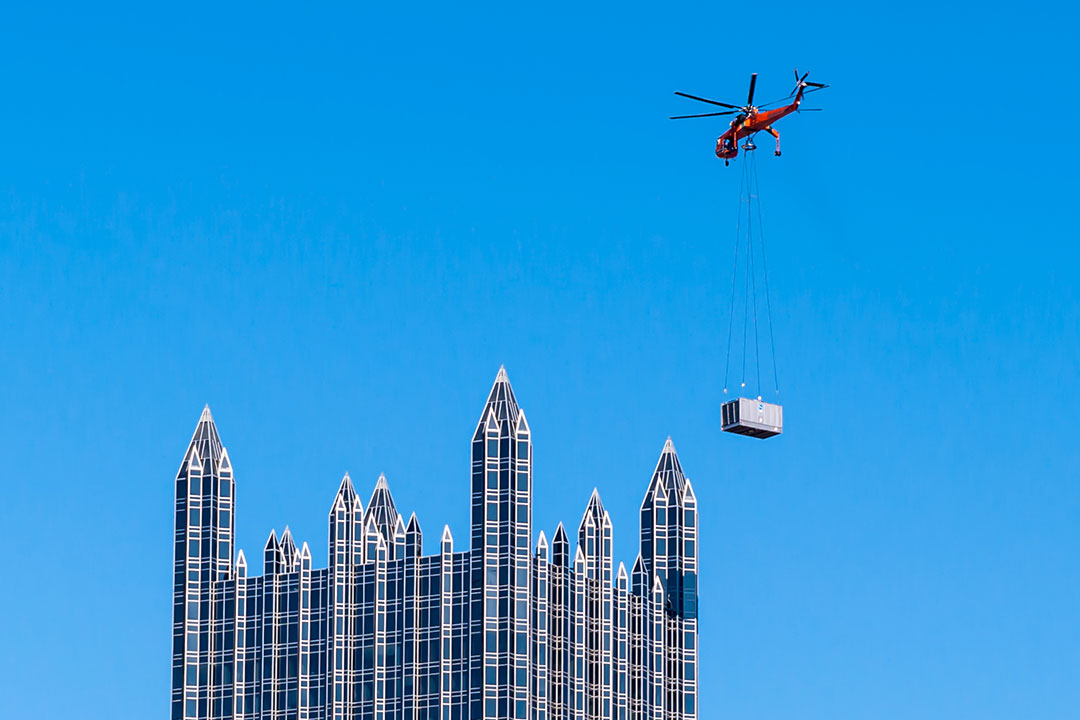
A skycrane lifts an HVAC unit on top of a large building.
Helicopters, serving as aerial cranes, remove many variables that create danger in ground lifts. Hovering aircraft do not need outriggers and avoid reliance on soil stability. They come in from above, work in vertical flight paths, and place loads with great accuracy.
Key benefits include:
- No ground contact: Helicopters avoid unstable soil, driveways, and landscaping completely.
- Direct aerial access: They can hover above structures, trees, and lines to drop materials exactly where required.
- Speed and efficiency: Most lifts finish in minutes, not the hours needed for staging and balancing.
- Reduced property disruption: Large cranes, long street closures, and heavy vehicle traffic are unnecessary.
- Enhanced safety margin: With little lateral force, the chance of collapse or tipping is much lower.
In the Hamilton Township case, a helicopter lift could have placed the hot tub straight into the yard from above. A similar method is normal for HVAC placements, rooftop installs, and utility work, where precision and safety justify the slight increase in flight expense.
How Helicopter Lifts Work
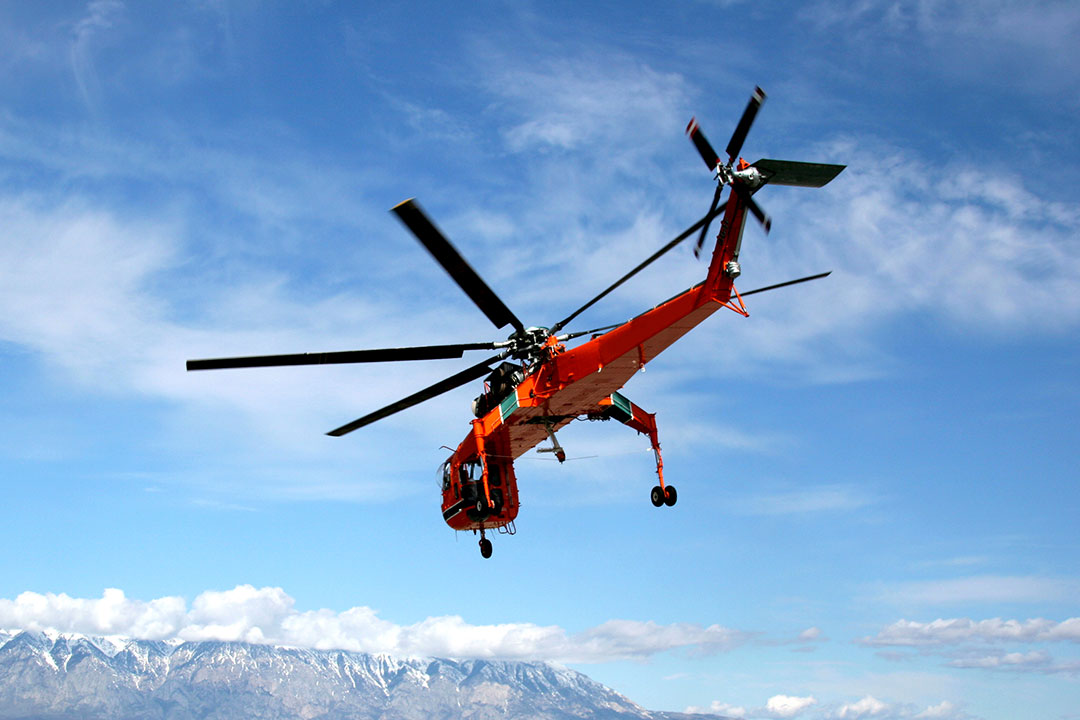
S-64 Skycrane
Aerial cranes use certified external load helicopters fitted with cargo hooks and sling systems made for heavy lifts. Aircraft such as the Sikorsky S-64 Skycrane, Bell 214B, or Airbus AS350 can carry loads from a few thousand to many thousands of pounds. Pilots manage rotor thrust, torque, and wind effects to keep control during lift and placement.
Each job starts with a full lift plan covering load weight checks, flight path review, weather assessment, and rigging inspection. Skilled pilots, working with ground signalers, maintain steady communication for precise control. Since helicopters work vertically, they escape the long leverage forces that ground cranes face, cutting mechanical stress and eliminating tip over risk.
Practical Limits and Ideal Use Cases
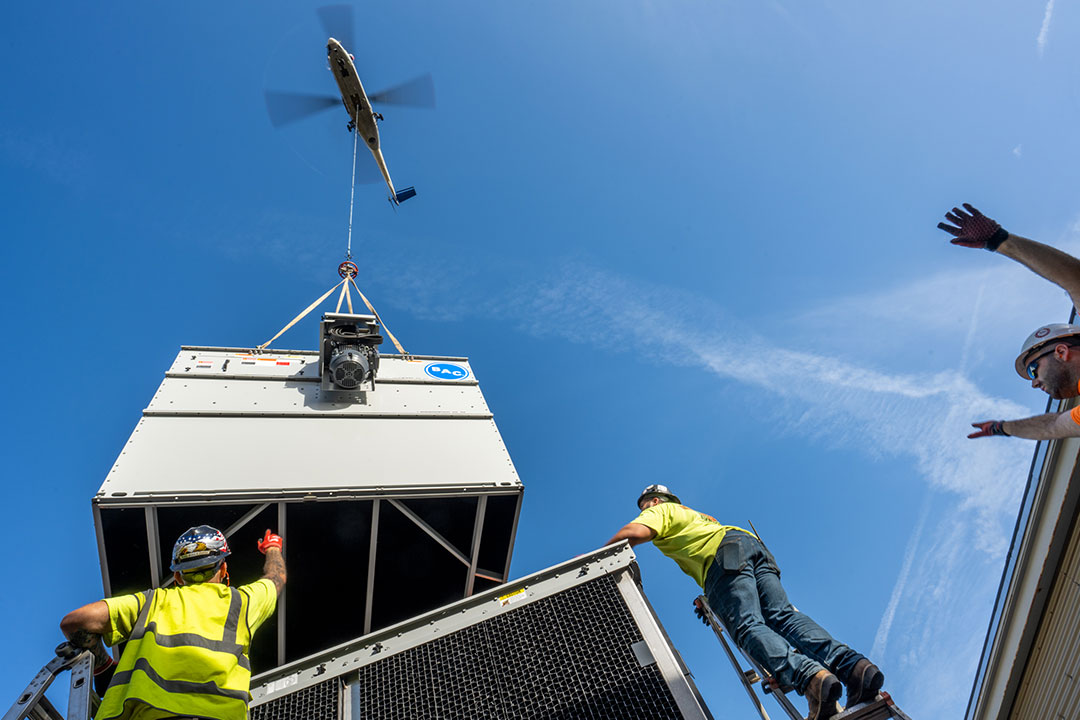
An HVAC unit being placed on a roof top.
Helicopter lifts work best when sites have limited ground access or when projects demand speed and accuracy. Examples are rooftop equipment placement, material delivery to mountainous areas, antenna or tower installs, and time sensitive building in populated zones.
Weather limits and weight restrictions are main factors. Helicopters cannot fly in severe winds or poor visibility, and each aircraft has a set lifting capacity. Still, for small to medium loads like spas, HVAC units, and solar panels, aerial cranes offer better safety performance. Risk management discussions stress the need for proper insurance and following FAA external load rules for these operations.
Why This Matters
In the wake of the crane collapse New Jersey homeowners faced, Fair Lifts continues to demonstrate why helicopter-assisted lifting is a safer, more efficient, and smarter choice for modern projects. Whether the task involves placing a hot tub behind a residence, positioning HVAC units on a rooftop, or managing precision construction in confined areas, Fair Lifts delivers aerial solutions that remove ground hazards and reduce project delays.
By choosing professional helicopter lift services like Fair Lifts, contractors and property owners can ensure every lift is handled with maximum control, minimal disruption, and the highest commitment to safety.
